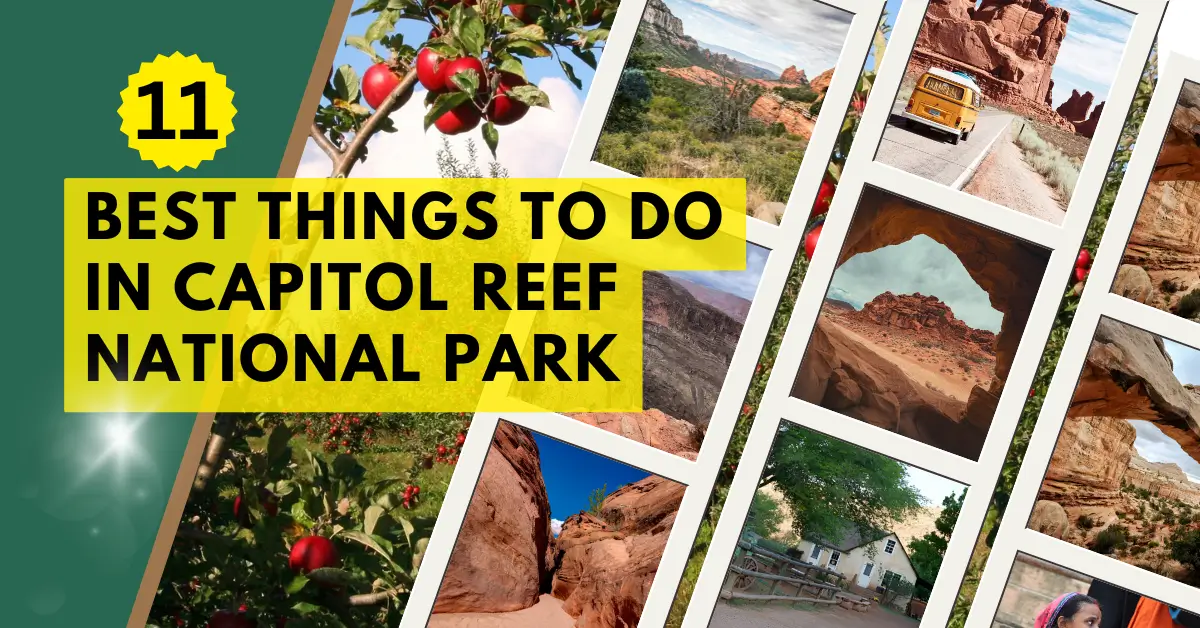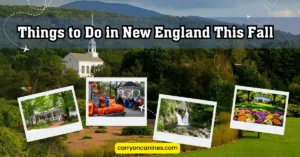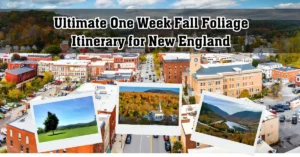Capitol Reef National Park was the quietest gem on my Utah road trip. Tucked away in south-central Utah, it doesn’t draw the same crowds as Zion or Bryce—but that’s exactly what makes it feel special. I spent two full days here and still felt like I barely scratched the surface. If you love towering cliffs, hidden arches, and trails that end in surprise vistas, Capitol Reef delivers in ways you won’t expect.
Below, I’ve compiled the 11 best things to do in Capitol Reef National Park—from personal hiking favorites to lesser-known scenic stops, plus travel tips that’ll make your visit smoother.
Where Capitol Reef National Park Is Located
Definition List
Location
South-central Utah, in the heart of red rock country.
Nearest Towns
• Torrey (5 miles)
• Bicknell (13 miles)
• Hanksville (28 miles from east entrance)
Closest Airports
• Salt Lake City International (3.5 hrs)
• St. George Regional (4 hrs)
• Las Vegas McCarran (5.5 hrs)
How to Get There
Driving is essential. The park is best accessed via Highway 24, which cuts through the Fruita District—Capitol Reef’s most visited and accessible area.
Best Time to Visit Capitol Reef
Spring and fall are ideal. I went in early May, and the temperatures hovered in the mid-70s with cool nights—perfect for hiking. Fall, especially late September into October, brings orchard harvests, colorful foliage, and crisp weather.
Avoid mid-summer if you can. While the elevation helps, temperatures can still soar into the 90s, and most trails have little shade. Winter can be beautiful and quiet but expect road closures and unpredictable conditions.
What Makes Capitol Reef Different from Other Utah Parks
Most people don’t realize that Capitol Reef spans nearly 100 miles north to south, and most of that is rugged, remote wilderness. The main area most visitors explore is the Fruita District, which includes scenic drives, orchards, and short hikes.
What sets Capitol Reef apart is the Waterpocket Fold, a massive wrinkle in the Earth’s crust that forms the backbone of the park. Imagine a rugged reef of stone rising from the desert—it’s both a geological marvel and an explorer’s dream.
Quick Overview of the Park’s Three Districts
Fruita District (Main Area)
Easily accessible, filled with historic landmarks, orchards, campgrounds, and scenic hikes.
Waterpocket Fold (South)
Remote and rugged, best for 4×4 adventures, backpacking, and canyoneering. Few facilities.
Cathedral Valley (North)
Requires high-clearance vehicles. Known for towering monoliths like Temple of the Sun and Moon.
I focused this article on the Fruita District, as it offers the richest experience for first-time visitors. But if you have extra days and a 4WD vehicle, the other districts offer jaw-dropping solitude.
Best Hikes in Capitol Reef National Park
After hiking all the major trails in Fruita and some lesser-known ones, here are the ones that stood out the most.
1. Hickman Bridge Trail
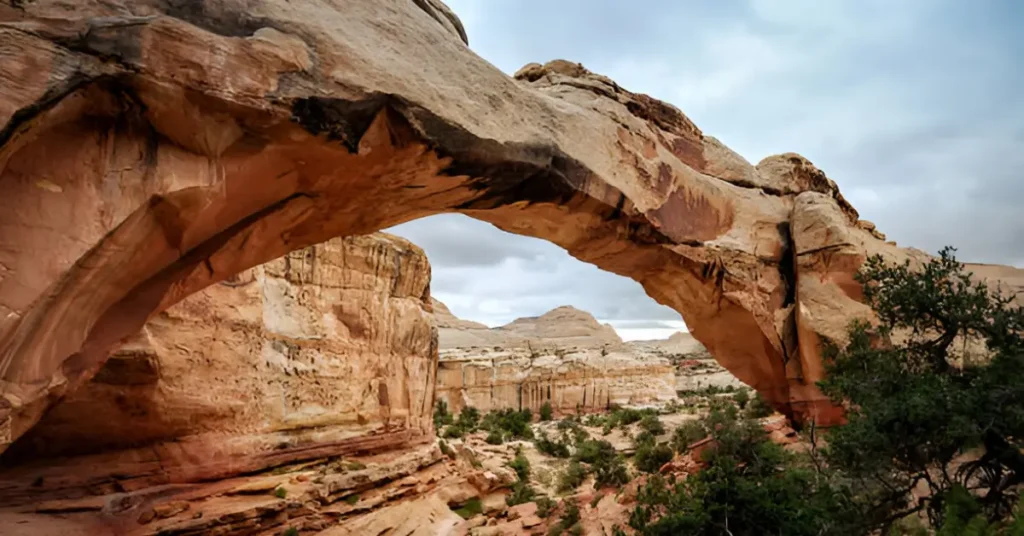
1.8 miles round-trip · Moderate
This trail quickly became my favorite. Starting near the Fremont River, the hike climbs steadily through cliffs and boulders before revealing a massive natural arch—Hickman Bridge. Morning light hits it just right, making the whole canyon glow. I saw very few people on the trail in the early hours, so get here by 8 AM if you want it to yourself.
What to Know
• Wear shoes with grip—there are some slick rock areas.
• Don’t stop under the cliff at the beginning (rockfall hazard).
• Great for families if you’re okay with a bit of elevation.
2. Cassidy Arch Trail
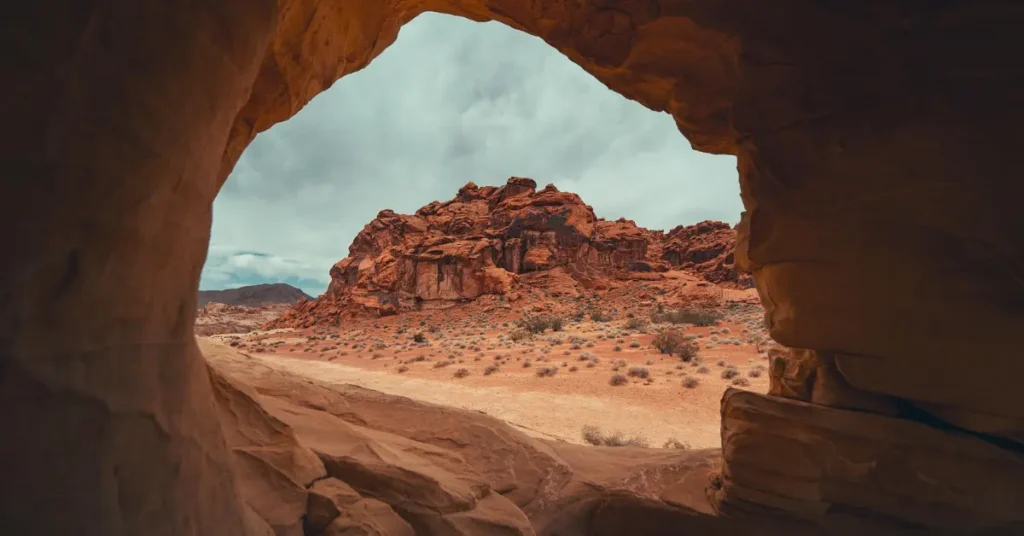
3.4 miles round-trip · Strenuous
This is a trail with a reward that literally lets you walk on top of a natural arch. Named after Butch Cassidy, who supposedly hid in the canyons here, the hike starts from the end of the Grand Wash spur road. It’s a steep climb with open drop-offs but absolutely worth it.
Traveler Tips
• Start early to avoid heat—there’s little shade.
• If you’re scared of heights, the last stretch might be tough.
• You’ll want your camera ready—this one’s epic.
3. Grand Wash Trail
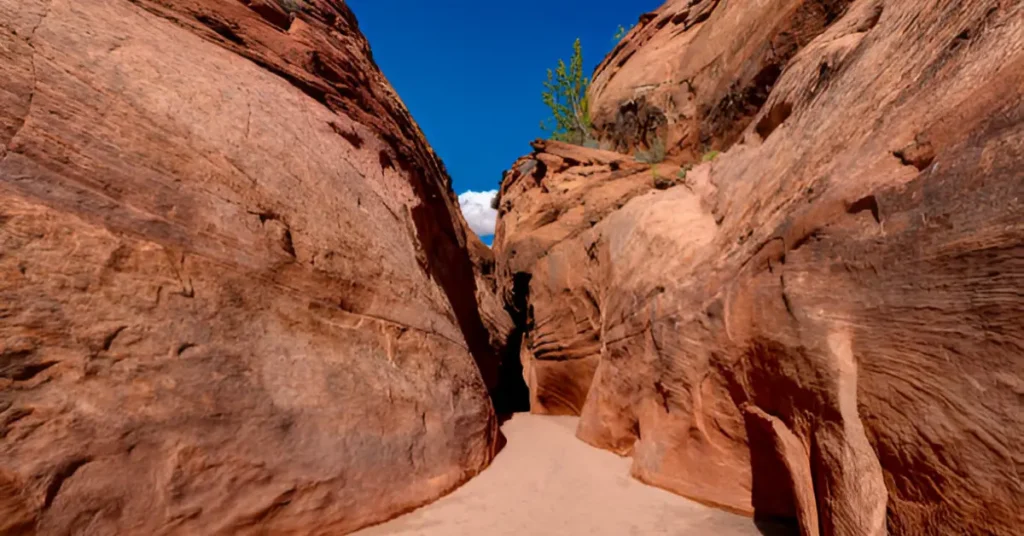
Up to 4.4 miles round-trip · Easy to Moderate
This flat canyon walk is ideal when you want a break from elevation. The towering walls stretch above you in what feels like a mini Zion Narrows—without the water. I entered from the Highway 24 side and went just far enough to hit “The Narrows,” a tight, winding section with dramatic rock textures.
Traveler Notes
• No need to do the whole trail—turn around when you feel like it.
• Flash flood risk—check weather before entering.
• Great for mid-day when other trails feel too exposed.
4. Chimney Rock Loop
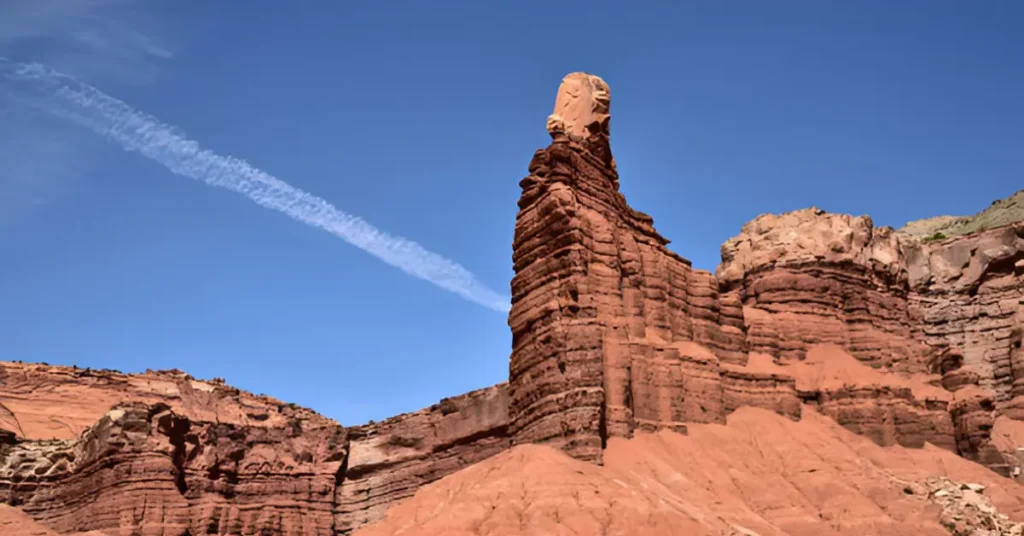
3.6-mile loop · Strenuous
If you’re coming in from the west entrance, this is one of the first trailheads you’ll see. It’s steep at the start, but the switchbacks quickly lead to panoramic views over the park and the namesake Chimney Rock formation.
I hiked this one at golden hour, and the light on the cliffs was unreal. It’s a solid workout, so bring water.
Pro Tip
• Parking is limited—arrive early or late.
• Watch your footing on loose gravel during descent.
5. Capitol Gorge Trail
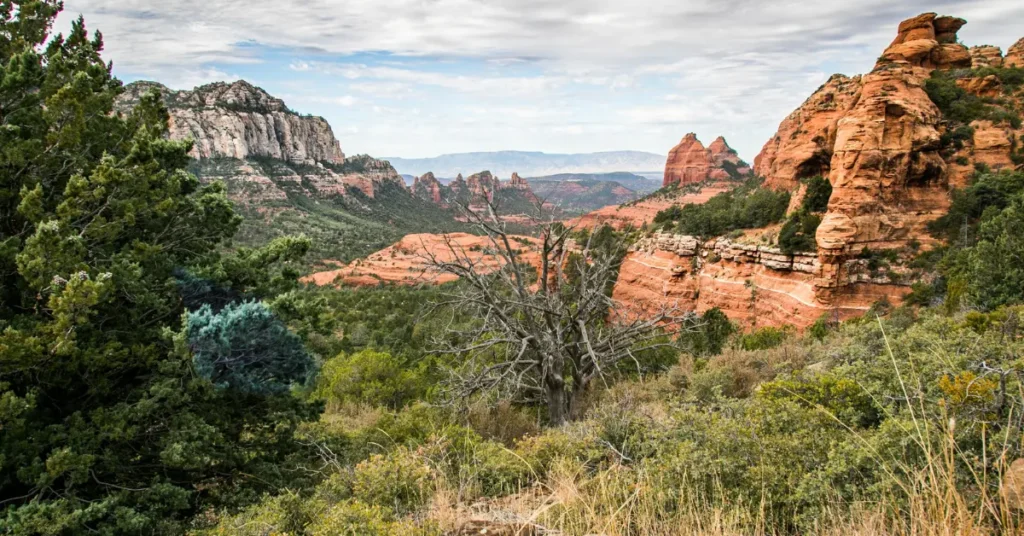
2 miles round-trip · Easy
This hike at the end of the Scenic Drive feels like walking through history. You’ll pass through narrow canyon walls and eventually reach the Pioneer Register, where settlers carved their names into the cliff over a century ago.
Why It’s Worth It
• The drive to the trailhead is half the fun.
• Ideal for families or casual walkers.
• You might spot desert bighorn sheep—bring binoculars.
6. Sunset Point and Goosenecks Overlook
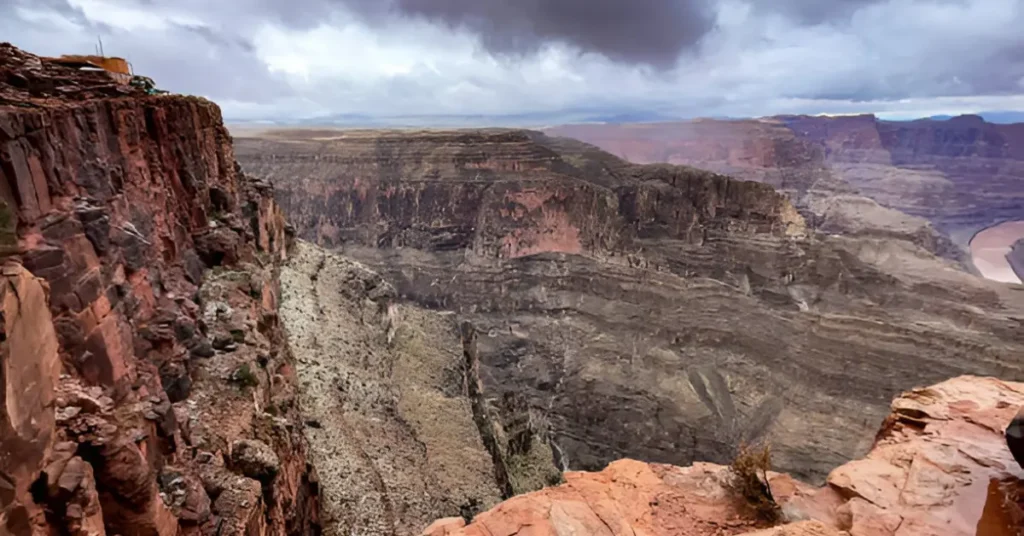
Less than 1 mile total · Easy
This combo is a great low-effort, high-reward detour. The Goosenecks overlook gives you a view straight down into the winding canyon of Sulphur Creek, and a short walk brings you to Sunset Point, which lives up to its name.
Insider Tip
• Go in the evening—fewer crowds and better light.
• Don’t miss the Goosenecks before heading to Sunset Point.
Best Non-Hiking Experiences in Capitol Reef National Park
Capitol Reef is more than just its trails. Some of my most memorable moments came while strolling through orchards, listening to ranger talks, and snacking on homemade pies. If you’re building a full-day itinerary or looking to balance hikes with relaxed activities, these stops are musts.
7. Scenic Drive through the Heart of the Park
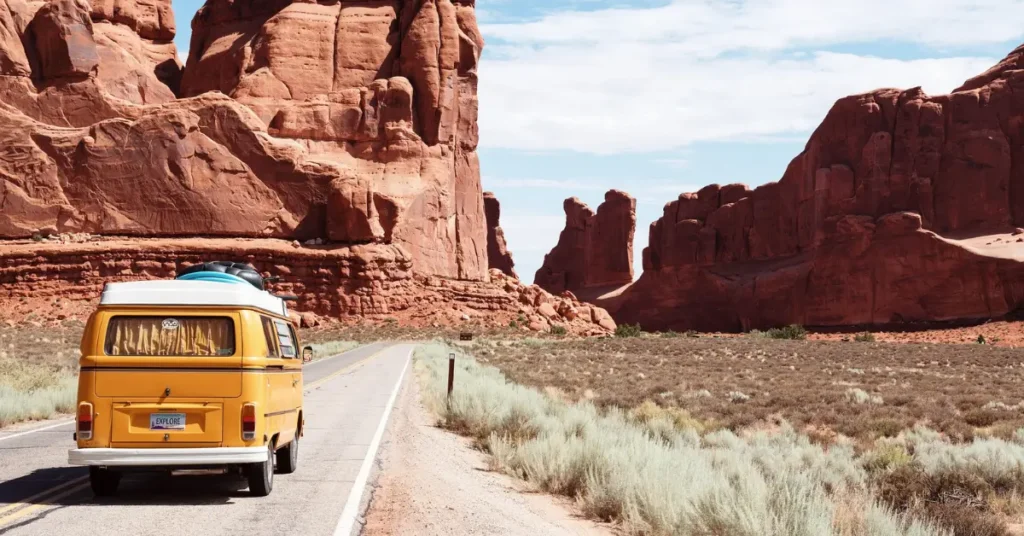
If you only have time for one non-hiking activity, make it the Scenic Drive. This 8-mile (one-way) paved road winds through the core of Capitol Reef’s dramatic red rock formations, with spurs leading to Grand Wash and Capitol Gorge.
Driving it felt like entering a prehistoric canyon world—steep cliffs on both sides, and barely any traffic when I went around mid-morning.
Quick Facts
• Fee required unless you have an America the Beautiful pass.
• Allow 1–2 hours if stopping at trailheads and pullouts.
• Unpaved sections may close after rain—check at the visitor center first.
Pro Tip
Download offline maps or bring a printed guide. There’s no cell signal here, and you’ll want to know what you’re passing.
8. Visit the Historic Fruita District
This charming settlement is like stepping into the past. Fruita was established by Mormon pioneers in the late 1800s, and the area is still maintained by the National Park Service.
There are orchards, historic buildings, and farm-style fences surrounded by sandstone cliffs. You can walk through it all without breaking a sweat.
Don’t Miss
• Fruita Schoolhouse – Peek inside the preserved one-room school.
• Blacksmith Shop – Sometimes open with exhibits.
• Old barn and fences – Perfect for photos and a quiet break.
9. Pick Fruit in the Fruita Orchards (Seasonal)

Yes—you can literally pick fresh fruit inside a national park. The Fruita Orchards include peach, apple, apricot, cherry, and pear trees, and visitors are welcome to sample fruit when it’s in season.
I visited in mid-September and grabbed ripe peaches straight from the branch. You’ll see signs that say “U-Pick” and pricing—bring cash or pay via the self-pay station.
Orchard Calendar Overview
| Fruit Type | Blooming Season | Harvest Season |
|---|---|---|
| Cherry | Late March | June–July |
| Apricot | Early April | June |
| Peach | Mid-April | August–Sept |
| Pear | Mid-April | Sept–Oct |
| Apple | Late April | Sept–Oct |
Traveler Tips
• Bring your own bag or container.
• Don’t pick if there’s no sign.
• Check with rangers for daily status—they update it at the visitor center.
10. Petroglyph Panels Along Highway 24
Right off the road near the visitor center is a wooden boardwalk that leads to ancient Fremont Culture petroglyphs. These images were carved into sandstone walls over 700 years ago and depict bighorn sheep, humans, and abstract patterns.
I spent about 20 minutes here studying the carvings—you might have to look closely, especially in late afternoon when shadows deepen.
What to Know
• Easy, accessible walk from the highway.
• Bring binoculars for better detail.
• Go in morning or evening for best visibility.
11. Gifford Homestead and Its Legendary Pie
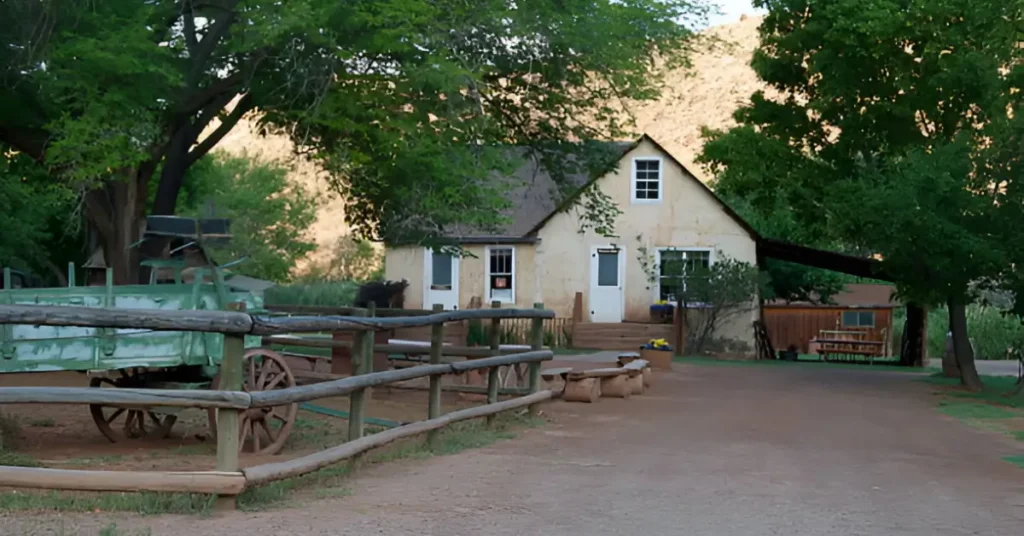
Located just down the road from the visitor center, the Gifford House is part museum, part country store, and part pie heaven. It opens seasonally (March to October) and serves up homemade mini pies made from Fruita’s own fruit harvests.
I grabbed a warm apple pie and a cinnamon roll around 10 AM—it was hands-down the best park treat I’ve ever had. Supplies sell out fast, so don’t wait until the afternoon.
Offerings Include
• Fruit pies (apple, peach, cherry)
• Cinnamon rolls
• Handmade souvenirs and books
• Local jams, salsas, and crafts
Hours
• Open daily 8 AM – 5 PM (seasonal)
• Opens March 14 (Pi Day—clever, right?)
Other Relaxed Activities to Add to Your Itinerary
Even if you’re not up for strenuous hikes, there’s still a lot you can experience on foot or from the car.
• Ranger-Led Geology Talks
Held at the Fruita Campground Amphitheater daily around 3 PM. It’s an easy and fascinating way to understand the Waterpocket Fold and what makes this area so geologically unique.
• Fremont River Trail (Chill Section)
Even without doing the full hike, walking along the riverside under cottonwoods offers great wildlife spotting. I saw a group of deer wander down to the riverbank while I sipped coffee from a bench.
• Stargazing
Capitol Reef is a certified International Dark Sky Park. Stay overnight, and you’ll be rewarded with some of the clearest night skies in the country. I saw the Milky Way within minutes of sunset. No light pollution, just stars.
Planning Your Trip to Capitol Reef National Park
Before you set out on your adventure, here are the essentials to help you feel confident and prepared.
Entrance Fee and Pass Options
Definition List
Standard Entry (Vehicle)
$20 per private vehicle (valid for 7 days)
Individual (Walk-in or Bike)
$10 per person
Motorcycle
$15 per motorcycle
Annual Pass
$35 for Capitol Reef only
$80 for America the Beautiful Pass (covers all U.S. national parks)
You can pay at the visitor center or self-pay station at the Scenic Drive entrance.
Where to Stay Near Capitol Reef National Park
I stayed in Torrey, which is just 5 miles from the park entrance and offers several excellent accommodations and dining options.
Recommended Lodging Options
| Name | Type | Highlights |
|---|---|---|
| Capitol Reef Resort | Hotel/Glamping | Teepees, cabins, and Red Cliffs views |
| Red Sands Hotel | Mid-range | Pool, clean rooms, great for families |
| Austin’s Chuckwagon Lodge | Lodge | Cozy Western vibe, walkable to restaurants |
| Wonderland RV Park | Campground | Affordable and great for RV travelers |
Camping in the Park
Fruita Campground is the only developed campground inside the park. It offers shaded sites near the river and orchards. Reservations open six months in advance via Recreation.gov and fill fast from spring to fall.
What to Pack for Capitol Reef
Even in the shoulder seasons, Capitol Reef’s high desert climate can swing between hot and cold quickly. I experienced temps in the 40s in the morning and 70s by midday.
Packing List
● Reusable water bottles or hydration bladder
● Layers: base layer, fleece, windbreaker
● Grippy hiking shoes or boots
● Wide-brimmed hat and sunglasses
● High SPF sunscreen
● Trail snacks and electrolyte tablets
● Binoculars for wildlife and petroglyphs
● Flashlight or headlamp for evening walks
● Paper map or downloaded trail maps (no signal in park)
Insider Tips for Visiting Capitol Reef
• Start Early
Most trailheads are empty before 9 AM. The morning light on the cliffs is magical and the temps are much more forgiving.
• Watch the Weather
Check forecasts at the visitor center. Flash floods can make unpaved roads and canyons dangerous quickly.
• Don’t Rely on Cell Service
There’s virtually no reception inside the park. Download offline maps, or grab a free paper version at the visitor center.
• Fuel Up Before You Arrive
Gas stations are limited. Fill your tank in Torrey or Bicknell before entering the park.
• Be Bear Aware
While not common, black bears have been spotted in remote parts of the park. Don’t leave food out unattended.
One Day in Capitol Reef Itinerary (If You’re Short on Time)
If you only have a day to explore, here’s a sample itinerary based on what I did.
Morning
● Arrive early and hike Hickman Bridge
● Drive Scenic Road and stop at Cassidy Arch Trailhead for a photo op
● Stroll the orchards and visit Fruita Schoolhouse
Afternoon
● Grab pie at Gifford Homestead
● Do Capitol Gorge Trail (flat and scenic)
● See petroglyph panels on your way out
Evening
● Watch the sunset at Sunset Point
● Drive back to Torrey for dinner and stargazing
Why Capitol Reef Should Be on Every Traveler’s List
Capitol Reef is one of those places that rewards both casual travelers and die-hard hikers. It’s accessible, peaceful, and endlessly photogenic. You won’t deal with long shuttle lines or elbow-to-elbow crowds—just pure, open desert beauty and a whole lot of quiet. Whether you’re into geology, stargazing, or fruit picking, this park offers a little bit of everything.
I left Capitol Reef with red dust on my boots, a full camera roll, and a strong desire to come back with a backpack and more time. If you’ve ever felt like the national parks are becoming too crowded or commercialized, Capitol Reef will restore your sense of wonder.

